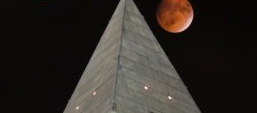People in many parts of North and South America will be able to see a total lunar eclipse Sunday night and early Monday morning.
A lunar eclipse happens when the moon passes through Earth's shadow as our planet goes around the Sun.
This kind of event does not happen every year. The last lunar eclipse seen in the United States took place in September 2015.
The eclipse this weekend is special. The moon will be a little closer than it normally is to the Earth.
For this reason, it will appear brighter than usual. Such a moon has come to be called a supermoon.
Astrophysicist Patrick Hartigan told the Associated Press, It not only is a supermoon and it's a total eclipse,
but the total eclipse also lasts pretty long. It's about an hour. Hartigan works at Rice University in Texas.
If skies are clear, the total lunar eclipse also will be partly visible in western Europe.
It will be fully visible in Greenland and Iceland.

When the moon is completely eclipsed, it looks darker and appears to have an orange or even a red color.
That is because the reduced amount of sunlight which reaches the moon is scattered by the Earth's atmosphere.
A sunset on Earth looks orange for a similar reason.
Because of its reddish color, an eclipsed moon is sometimes called a blood moon.
While the moon, Earth's only natural satellite, will be closer than usual, it still will be 357,000 kilometers away from our planet.
This will be the first of three full-moon supermoons this year.
The next total lunar eclipse visible anywhere in the world will not happen until May 2021.
I'm Mario Ritter Jr.












